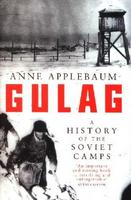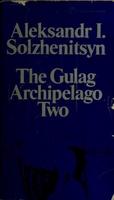Subject

photo credits: Wikimedia Commons
The Gulag was a system of forced labor camps in the Soviet Union. The word Gulag originally referred only to the division of the Soviet secret police that was in charge of running the forced labor camps from the 1930s to the early 1950s during Joseph Stalin's rule, when the system was at its peak, but in the English language can be used to refer to the system of Soviet labor camps in general that began under Vladimir Lenin. The full official name of the agency changed several times. The Gulag is recognized as a major instrument of political repression in the Soviet Union. The camps housed a wide range of convicts, from petty criminals to political prisoners, a large number of whom were convicted by simplified procedures, such as NKVD troikas or other instruments of extrajudicial punishment. In 1918–1922, the agency was administered by the Cheka, followed by the GPU (1922–1923), the OGPU (1923–1934), later known as the NKVD (1934–1946), and the Ministry of Internal Affairs (MVD) in the final years. The Solovki prison camp, the first correctional labour camp which was constructed after the revolution, was opened in 1918 and legalized by a decree, "On the creation of the forced-labor camps", on April 15, 1919. The internment system grew rapidly, reaching a population of 100,000 in the 1920s. By the end of 1940, the population of the Gulag camps amounted to 1.5 million. The emergent consensus among scholars is that, of the 14 million prisoners who passed through the Gulag camps and the 4 million prisoners who passed through the Gulag colonies from 1930 to 1953, roughly 1.5 to 1.7 million prisoners perished there or they died soon after they were released. Some journalists and writers who question the reliability of such data heavily rely on memoir sources that come to higher estimations. Archival researchers have found "no plan of destruction" of the gulag population and no statement of official intent to kill them, and prisoner releases vastly exceeded the number of deaths in the Gulag. This policy can partially be attributed to the common practice of releasing prisoners who were suffering from incurable diseases as well as prisoners who were near death.Almost immediately after the death of Stalin, the Soviet establishment started to dismantle the Gulag system. A mass general amnesty was granted in the immediate aftermath of Stalin's death, but it was only offered to non-political prisoners and political prisoners who had been sentenced to a maximum of five years in prison. Shortly thereafter, Nikita Khrushchev was elected First Secretary, initiating the processes of de-Stalinization and the Khrushchev Thaw, triggering a mass release and rehabilitation of political prisoners. Six years later, on 25 January 1960, the Gulag system was officially abolished when the remains of its administration were dissolved by Khrushchev. The legal practice of sentencing convicts to penal labor continues to exist in the Russian Federation, but its capacity is greatly reduced.Aleksandr Solzhenitsyn, winner of the Nobel Prize in Literature, who survived eight years of Gulag incarceration, gave the term its international repute with the publication of The Gulag Archipelago in 1973. The author likened the scattered camps to "a chain of islands", and as an eyewitness, he described the Gulag as a system where people were worked to death. In March 1940, there were 53 Gulag camp directorates (simply referred to as "camps") and 423 labor colonies in the Soviet Union. Many mining and industrial towns and cities in northern Russia, eastern Russia and Kazakhstan such as Karaganda, Norilsk, Vorkuta and Magadan, were blocks of camps which were originally built by prisoners and subsequently run by ex-prisoners. Source: Wikipedia (en)
Works about Gulag 3
Subject - wd:Q161448

